(L. Eötvös)
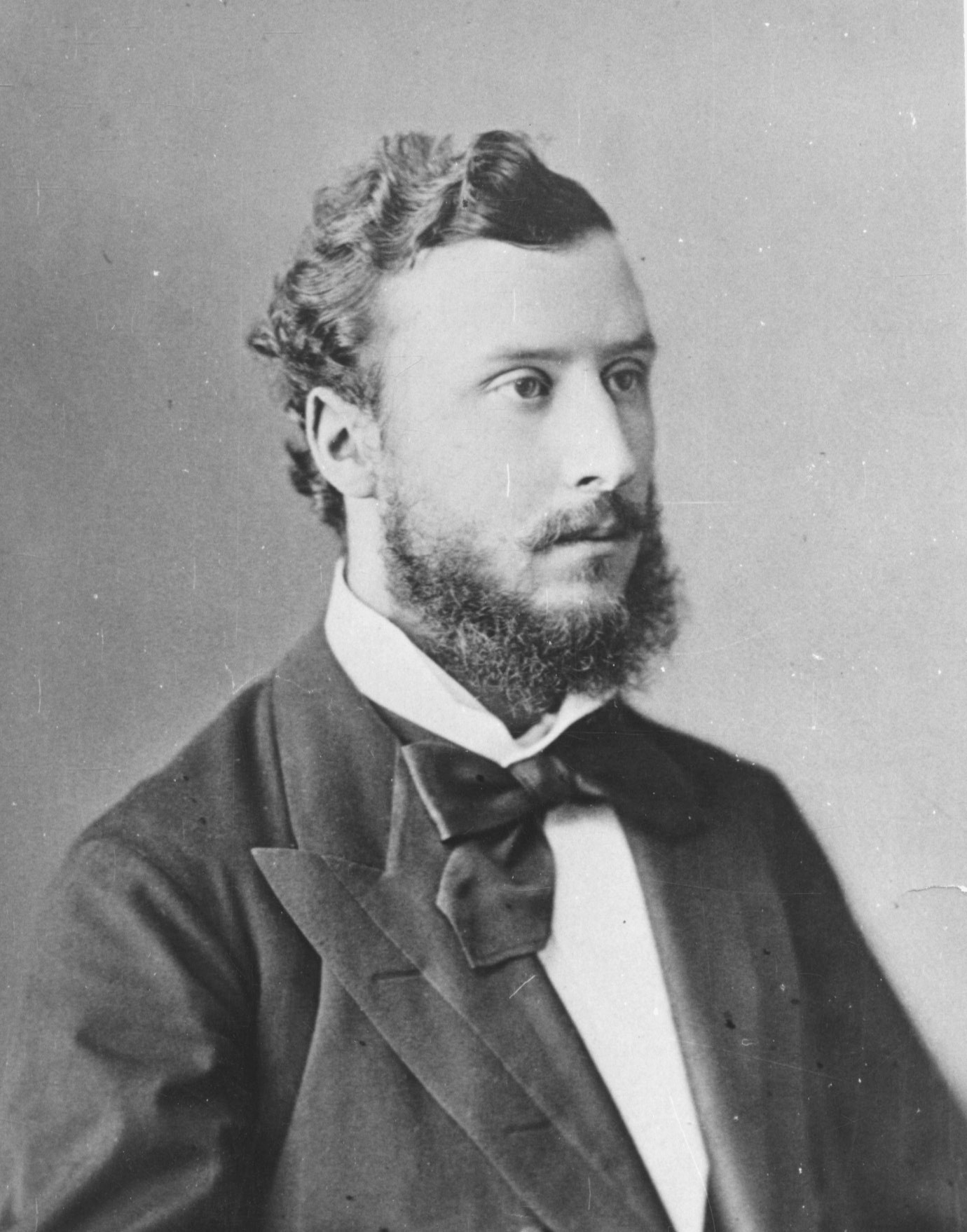
Loránd Eötvös around 1870
Contents
Main Events in Eötvös’ Life
His Main Scientific Achievements
Eötvös, a Man of Outstanding Personality
His Most Important Results in the Field of Gravity
Proportionality of Inertial and Gravitational Mass
Eötvös Effect
Rotating Balance
Eötvös’ Ars Poetica
You Get More Information
The statue
1867–70 Studies in natural sciences at the Heidelberg University
1870 Graduated Summa cum laude in physics, mathematics and chemistry
Eötvös put all his effort to preparing for his examinations. In his letter to his father of 8th July 1870 he says: "... I've had the results of my doctorate today. And my greatest delight is that this news will bring you pleasure. I passed my finals with first class honours, a distinction envied by many."

1872 Appointed professor of theoretical physics
1873 Elected corresponding member of the Hungarian Academy of Sciences
1878 Appointed professor of the Department of Experimental Physics
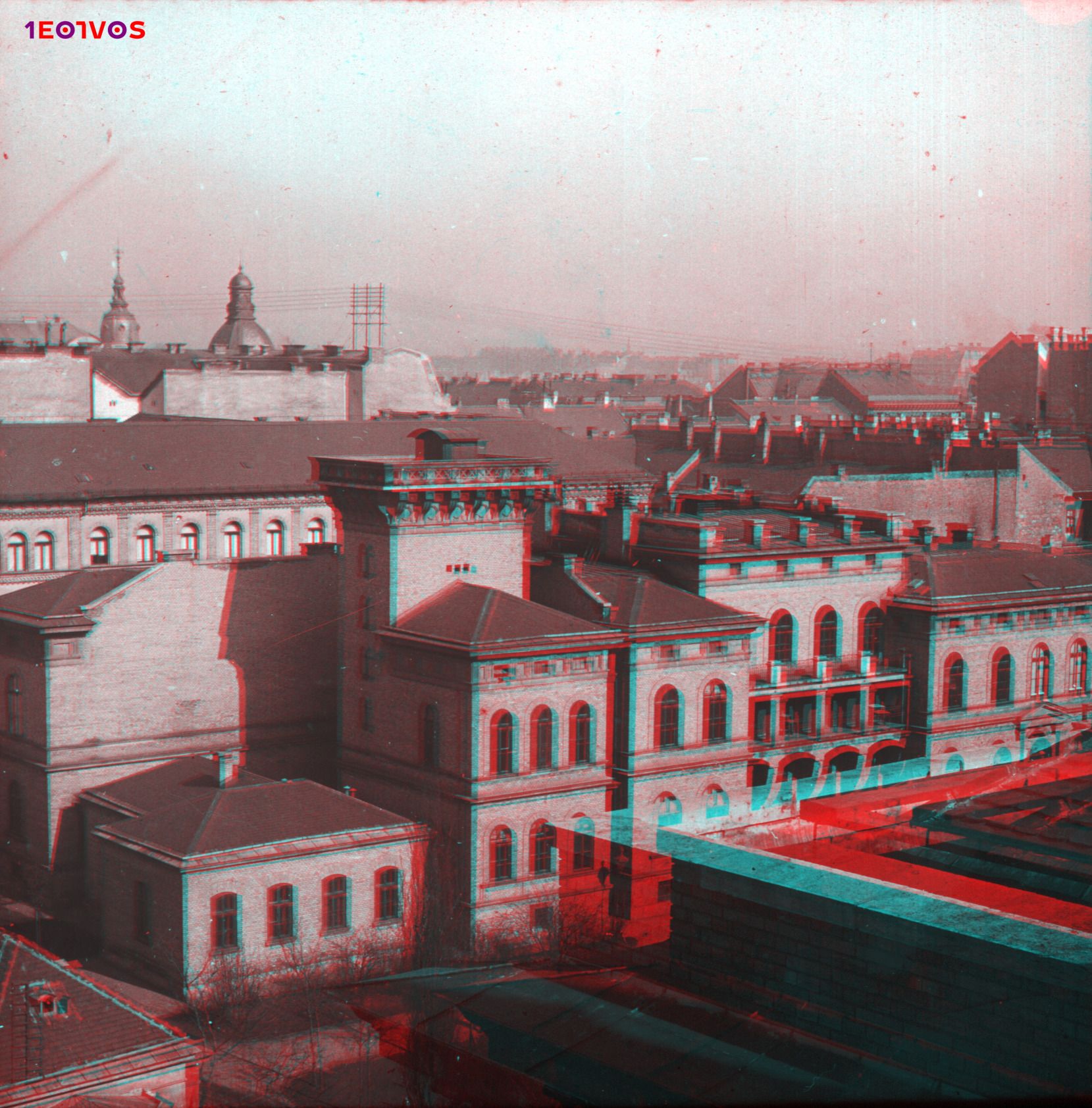
1889 Elected President of the Hungarian Academy of Sciences
1891 Takes leading role in organizing the Mathematical and Physical Society and in starting its journal: Mathematical and Physical Papers

Law of freedom of religions.
Enlarged the public school network.
Initiated the foundation of the József Eötvös College. The College named after his father, who has been an outstanding author and liberal politician of his time.
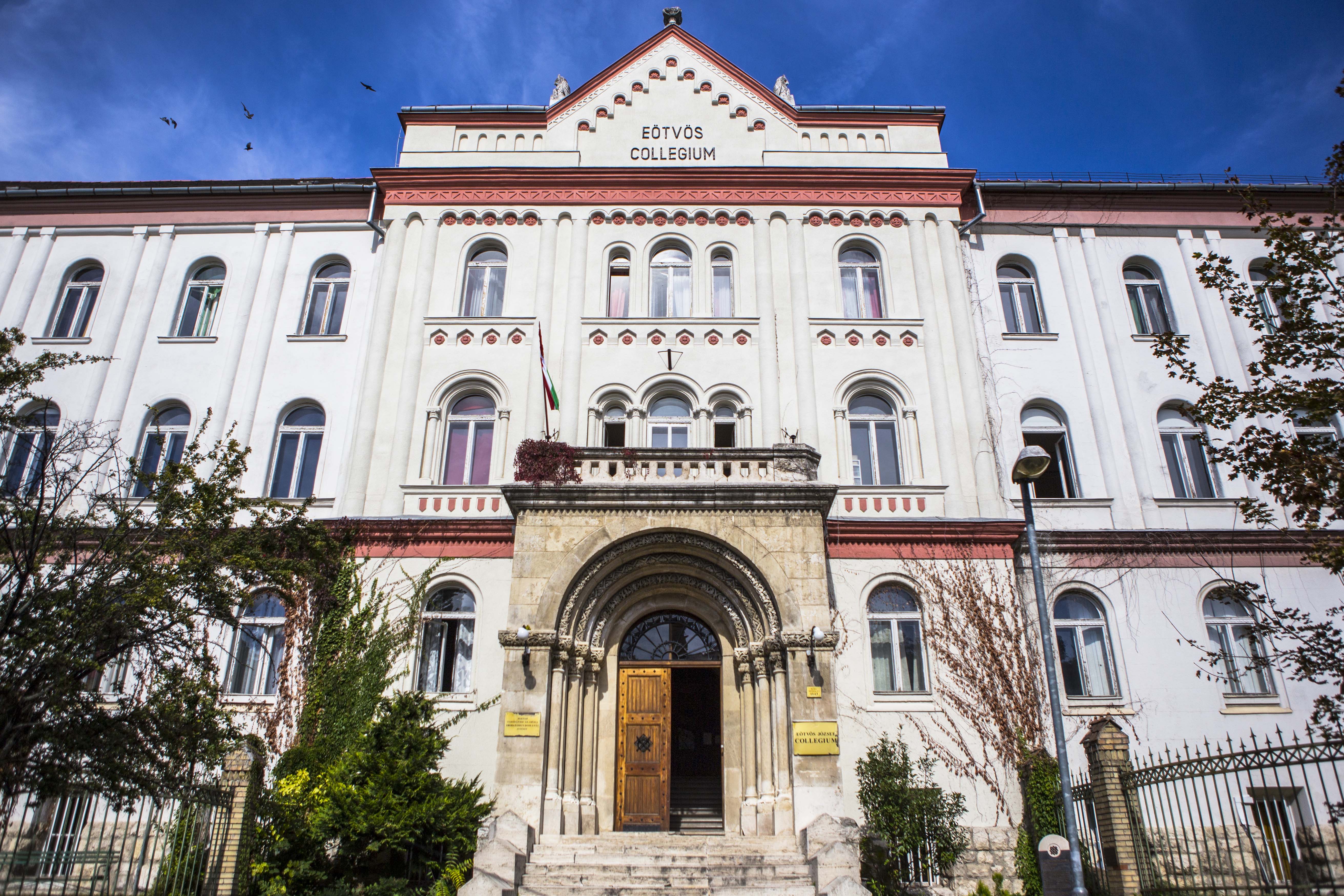
8th April 1919 "...a prince of classic physics died." (A. Einstein)

1886–1919 Gravity and geomagnetic studies
1890 Curvature- and horizontal variometer
1891 First torsion balance field measurements on Ság Hill
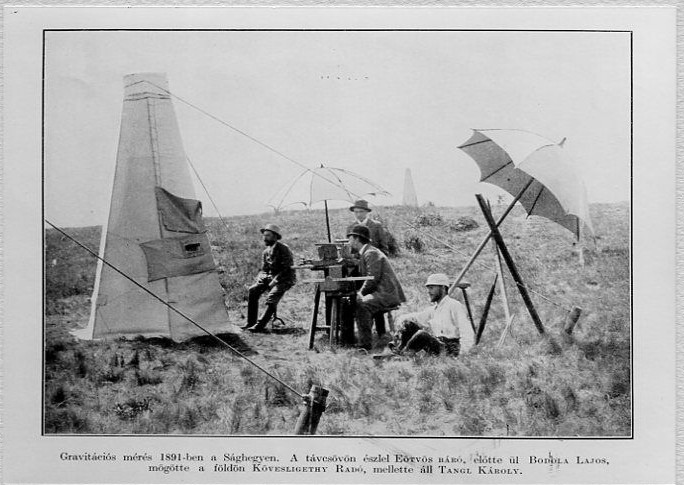
1896 Studies in the Field of Gravity and Magnetics (a review)
1898 Single gravity variometer (the Balaton balance)
1901 Bifilar gravimeter. It was the first gravimeter all over the world.
1901 and 1903 First regional torsion balance survey, on the frozen Lake Balaton
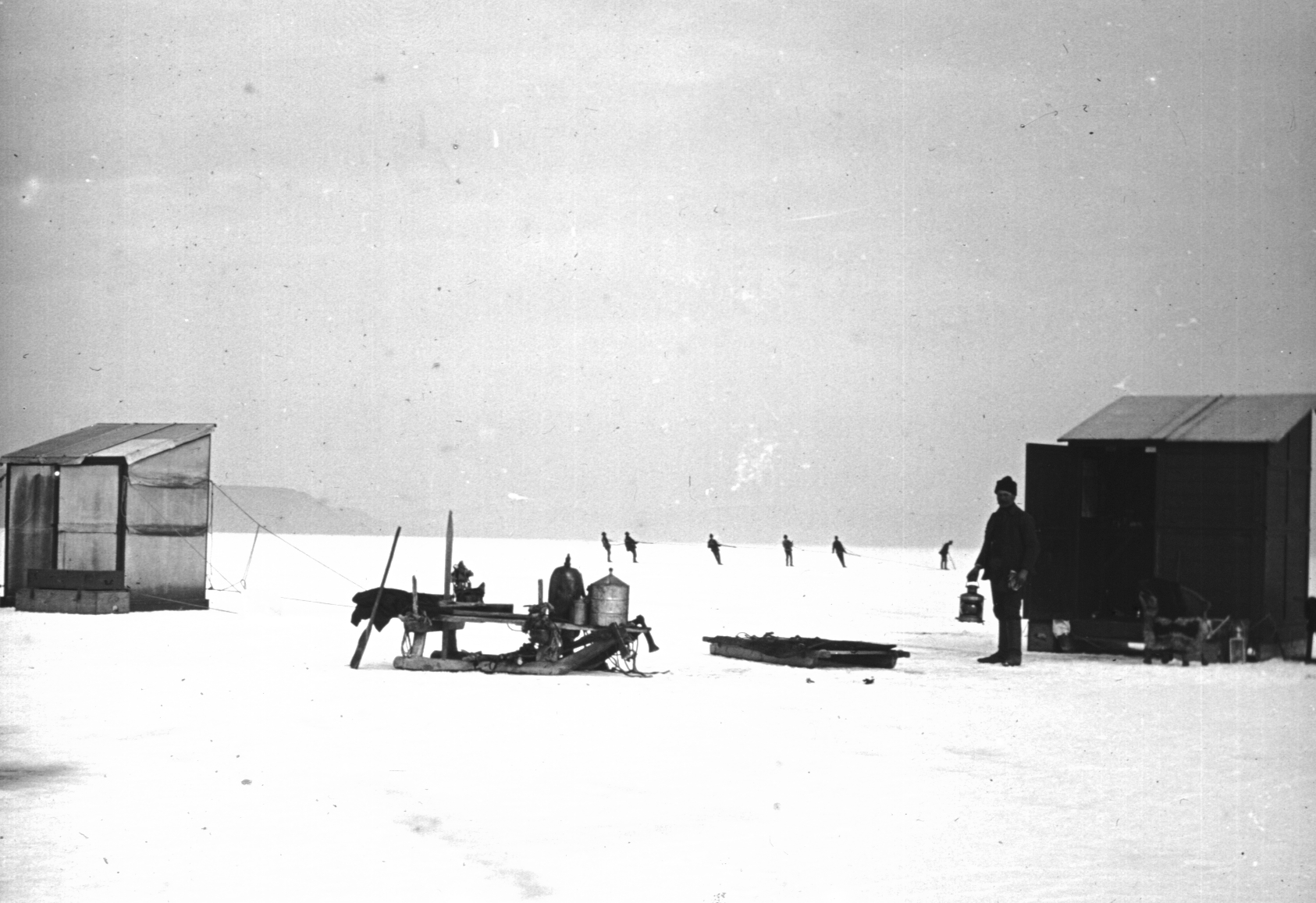
1915 Construction of a device (rotating balance) to demonstrate the Eötvös effect
1916 Egbell survey i.e. measurements with torsion balance on a known HC field. The birth of petroleum-geophysics.
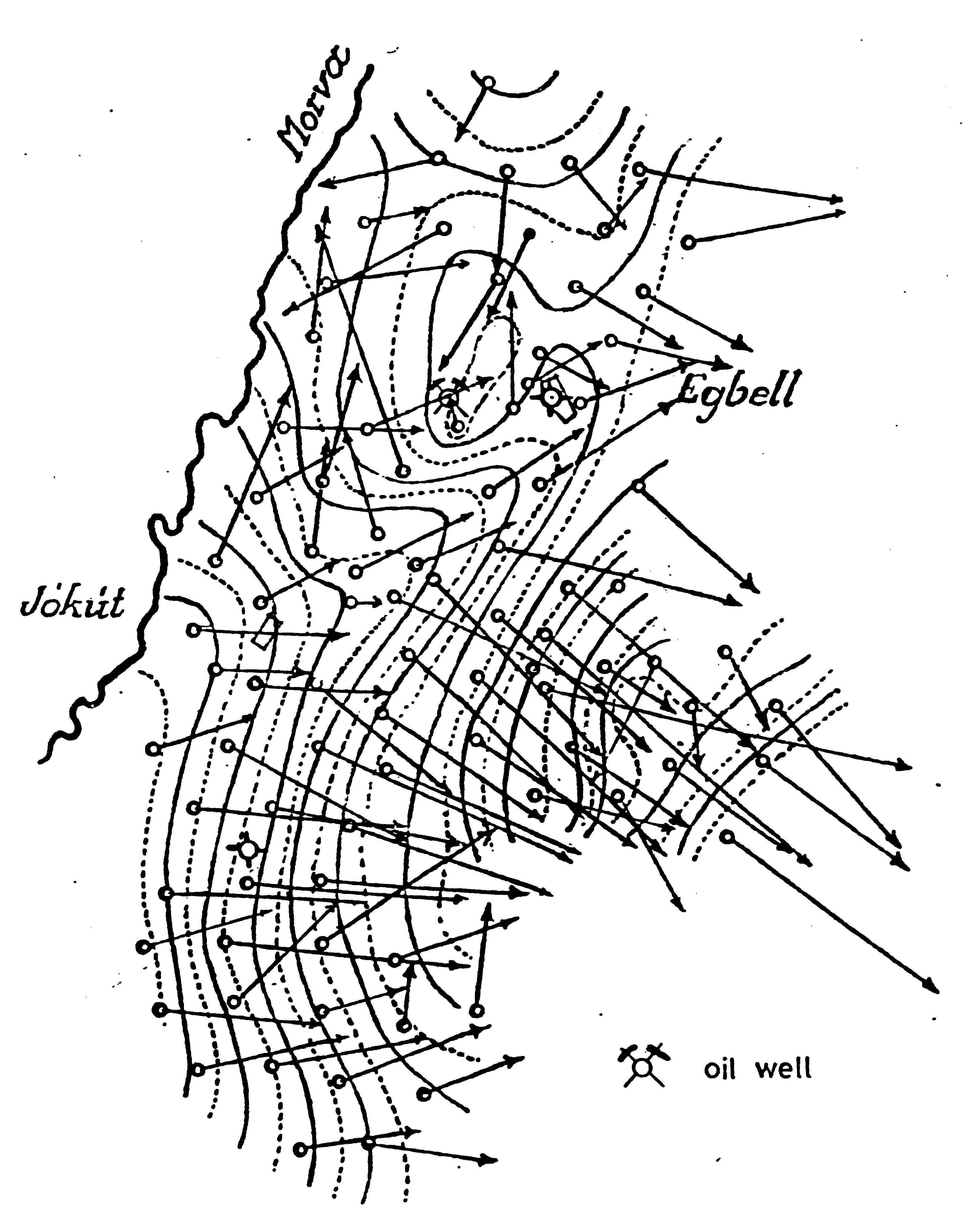
His Main Scientific Achievements
Eötvös, a Man of Outstanding Personality
His Most Important Results in the Field of Gravity
Proportionality of Inertial and Gravitational Mass
Eötvös Effect
Rotating Balance
Eötvös’ Ars Poetica
You Get More Information
The statue
Main Events in Eötvös’ Life
1865–67 Studies in law and political sciences at the University of Pest1867–70 Studies in natural sciences at the Heidelberg University
1870 Graduated Summa cum laude in physics, mathematics and chemistry
Eötvös put all his effort to preparing for his examinations. In his letter to his father of 8th July 1870 he says: "... I've had the results of my doctorate today. And my greatest delight is that this news will bring you pleasure. I passed my finals with first class honours, a distinction envied by many."

Documents of the Loránd Eötvös Memorial Exhibition
1871 Offered post of assistant lecturer at the Department of Theoretical Physics of the University of Pest1872 Appointed professor of theoretical physics
1873 Elected corresponding member of the Hungarian Academy of Sciences
1878 Appointed professor of the Department of Experimental Physics

The building of the Physics Institute of Budapest University, designed according to Eötvös' directions
1883 Elected full member of the Academy of Sciences1889 Elected President of the Hungarian Academy of Sciences
1891 Takes leading role in organizing the Mathematical and Physical Society and in starting its journal: Mathematical and Physical Papers

Loránd Eötvös around 1885
June 1894–January 1895 Minister of religion and education.Law of freedom of religions.
Enlarged the public school network.
Initiated the foundation of the József Eötvös College. The College named after his father, who has been an outstanding author and liberal politician of his time.

The building of the Eötvös College, Budapest
1905 Gives up presidency of the Academy to devote himself entirely to research8th April 1919 "...a prince of classic physics died." (A. Einstein)

Portrait of Loránd Eötvös, around 1916
His Main Scientific Achievements
1875–1885 Studies in the field of capillarity: reflection method for determining the capillary constant; the Eötvös rule; the Eötvös constant1886–1919 Gravity and geomagnetic studies
1890 Curvature- and horizontal variometer
1891 First torsion balance field measurements on Ság Hill

The first field measurement with horizontal variometer on Ság Hill (near Celldömölk, 1891)
On the photo, documenting this event, Eötvös can be seen at the telescope; in front of him is Lajos Bodola, next to him sitting on the ground Radó Kövesligethy, while the standing figure is Károly Tangl. In later years all of them were to become eminent professor.1896 Studies in the Field of Gravity and Magnetics (a review)
1898 Single gravity variometer (the Balaton balance)
1901 Bifilar gravimeter. It was the first gravimeter all over the world.
1901 and 1903 First regional torsion balance survey, on the frozen Lake Balaton

Measurement on the frozen Lake Balaton in the year of 1901
1909 Awarded the Beneke prize for work on the proportionality of inertia and gravitation1915 Construction of a device (rotating balance) to demonstrate the Eötvös effect
1916 Egbell survey i.e. measurements with torsion balance on a known HC field. The birth of petroleum-geophysics.

Gradient and isogam map of the Egbell region, 1916 (now Gbely Slovakia)
Eötvös, a Man of Outstanding Personality
Eötvös was a modest scientist. He shunned the limelight, disliked noisy ceremonies, and did not seek moral or financial reward. In spite of this he was highly acclaimed, and received awards at home and abroad for his scientific work and skill as an organizer. Among the very many awards he received were the French Legion of Honour, the Franz Josef award from the Hungarian king, the Saint Sava award from the king of Serbia. He was also elected honorary member of the Prussian Royal Academy of Sciences in Berlin and was given honorary doctorates from Jagello University in Cracow and the Norwegian Royal Frederick University in Christiania (now Oslo). In addition to the above, many other honours were bestowed on him, and he was elected an officer of social and scientific organizations.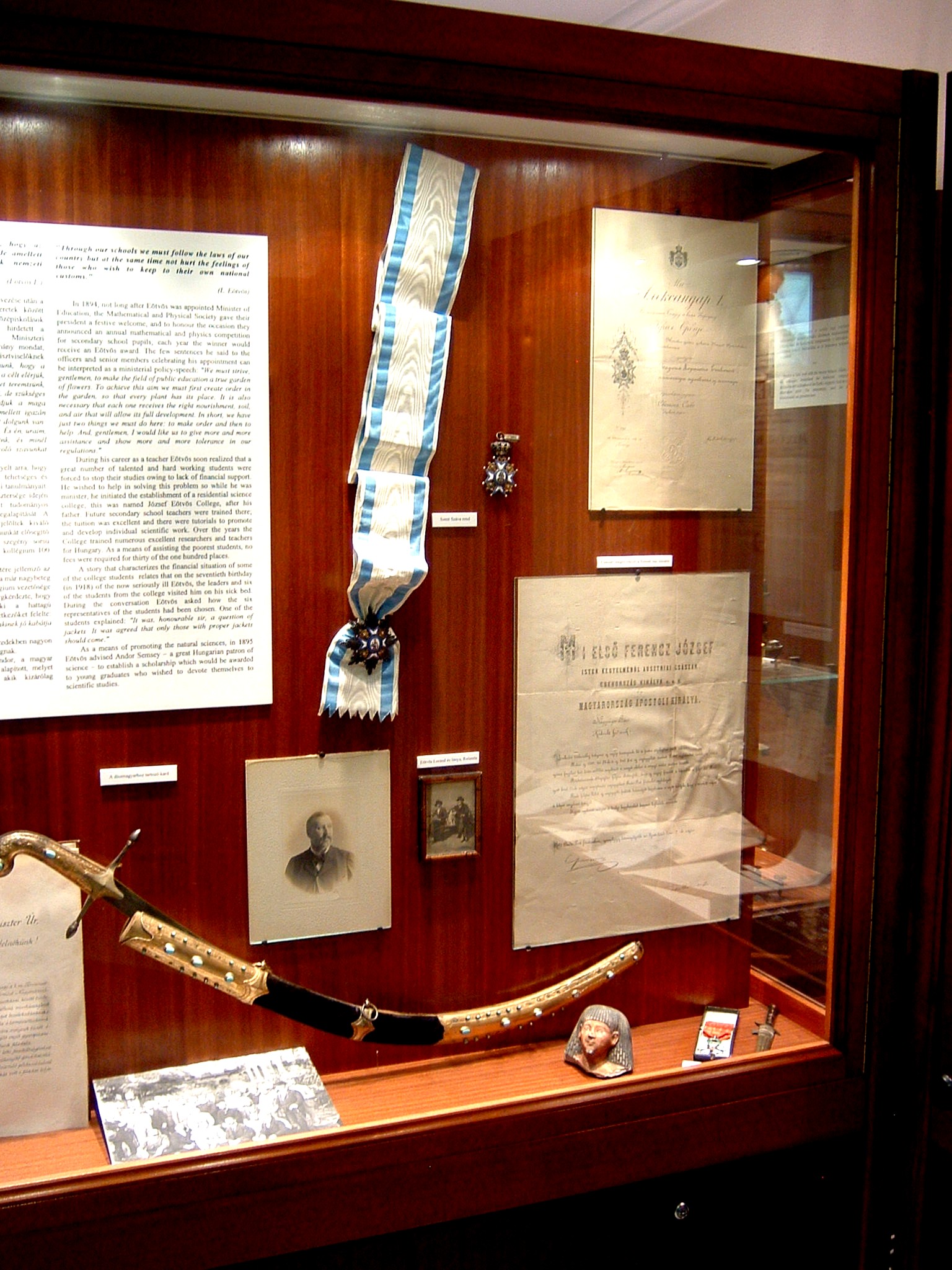
Documents of the Loránd Eötvös Memorial Exhibition
It was obvious that Eötvös was a well balanced individual. Besides his intensive mental work he always found time for relaxation and sport. He often cycled, went riding and regularly made the more than 12 kilometre journey from his home to the university on horseback. In the summer he indulged in his passion for rock climbing. He ranked among the best mountaineers in his time. As an enthusiastic photographer, he took hundreds of pictures during his mountaineering excursions.
Excursion in the Dolomites (South Tyrol Italy)
The first exhibition of amateur photographers was organised in Hungary at 1890. On that occasion a gold medal was awarded to Eötvös by Princess Maria Theresa, the exhibition’s chief patron.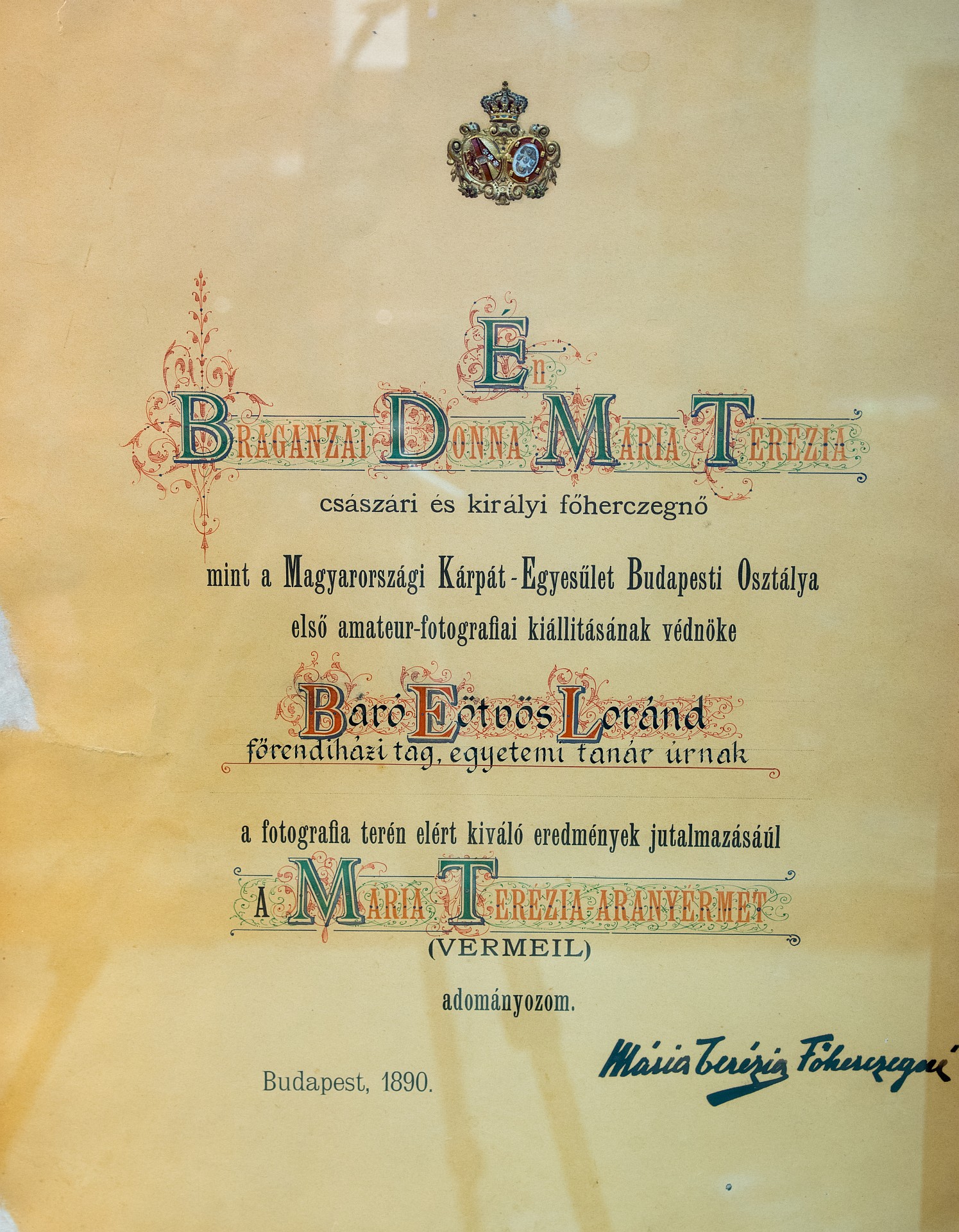
Honorary diploma for Loránd Eötvös
In later years his daughters accompanied him on his expeditions, and also became keen alpinists. Eötvös' climbing achievements in the Southern Tirol made the "Hungarian professor's" name so well-known that in 1902 a peak of 2837 metres in the Dolomites (Italy) was named after him: Cima di Eötvös (Eötvös peak).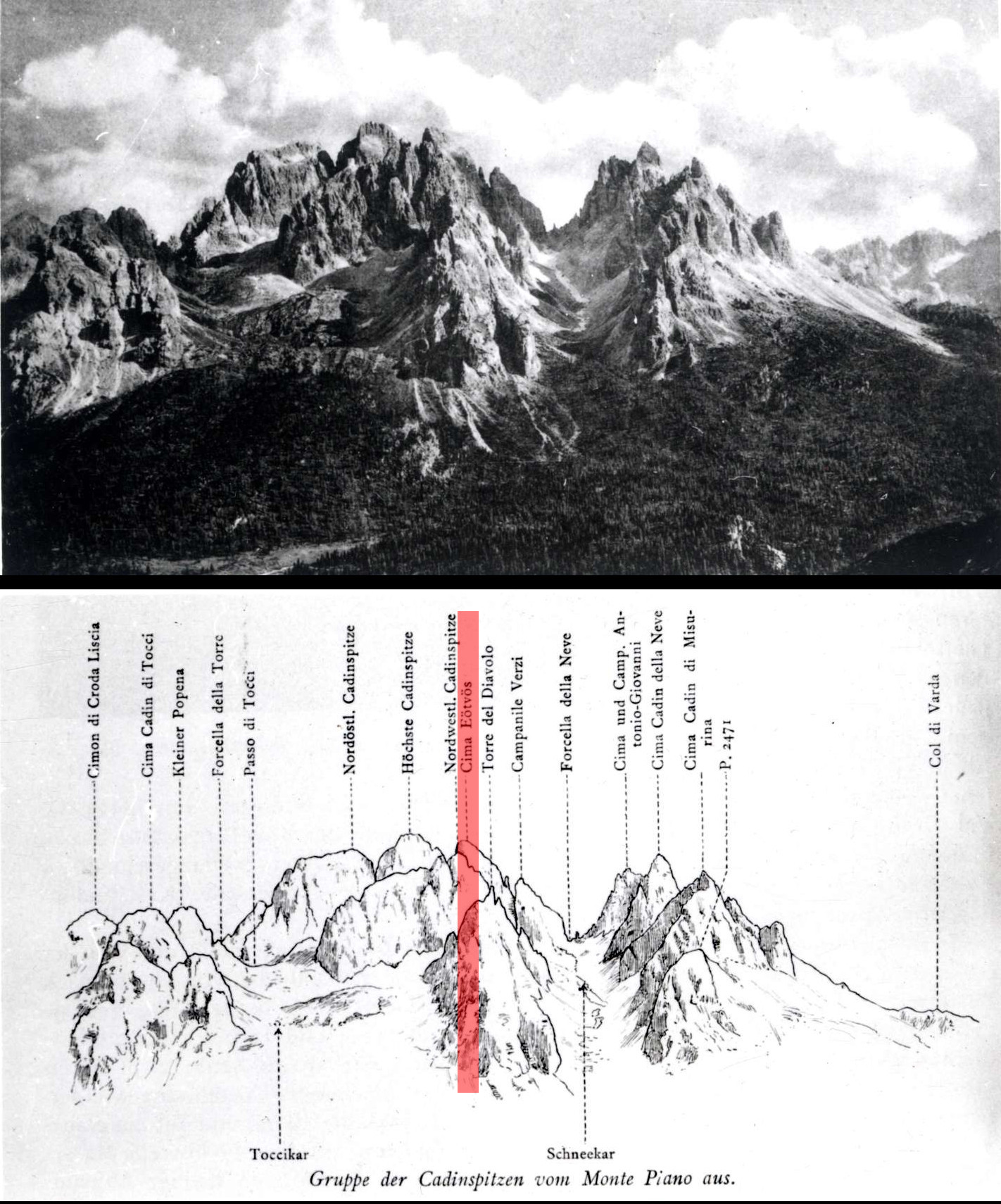
The Cadin Group with Eötvös peak
In the company of friends he often joked that he was prouder of his mountaineering successes than his discovery of the torsion balance. For many years, as president of the Hungarian Touring Society, he achieved a great deal in the popularization of tourism in Hungary.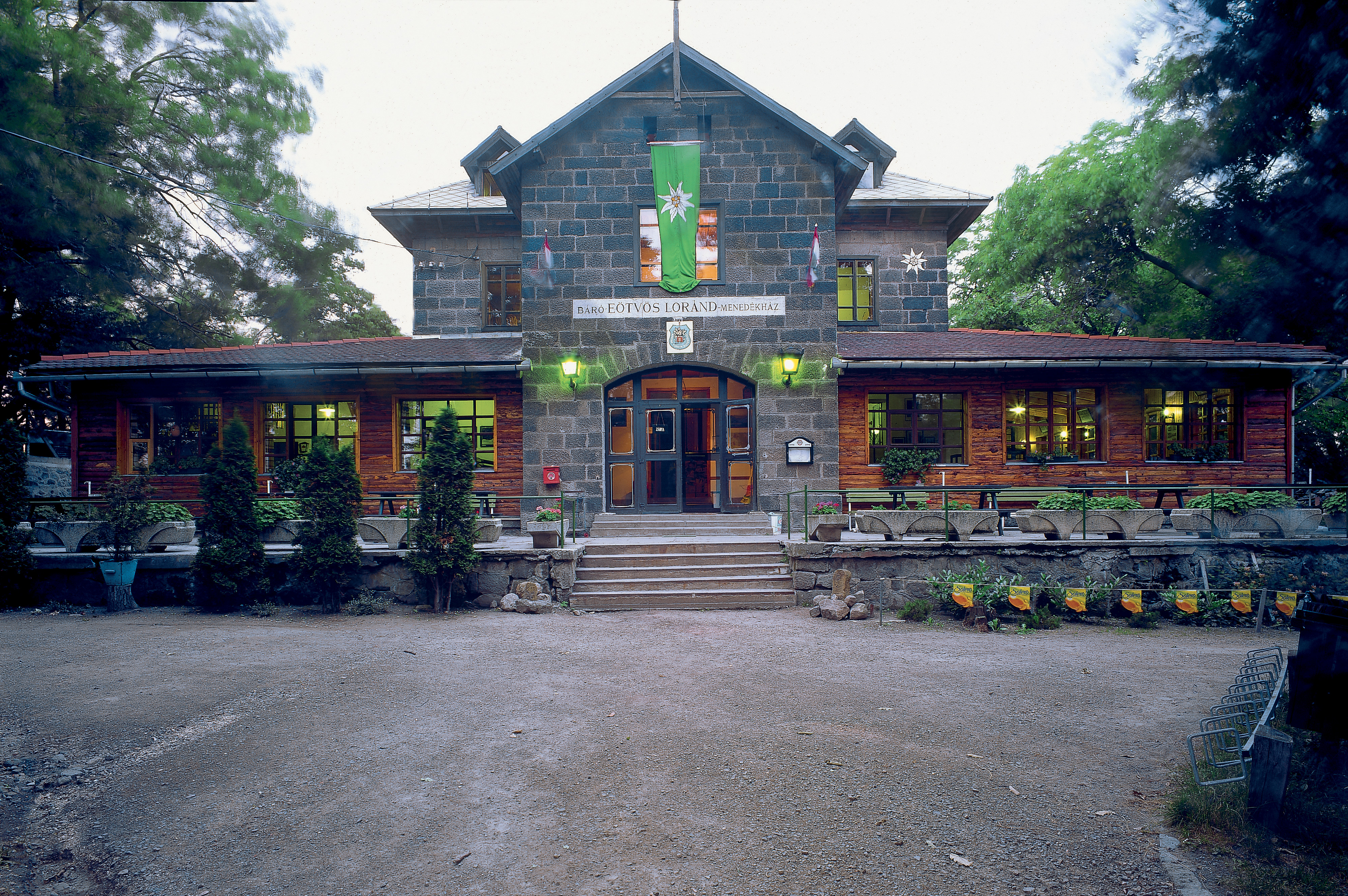
The baron Loránd Eötvös guest-house on top of Dobogókő hill
His Most Important Results in the Field of Gravity
Curvature Variometer (1890)
This instrument is practically the same as a Coulomb balance. It is sensitive to the variation in direction of the gravity field. A separate telescope is used to take readings.
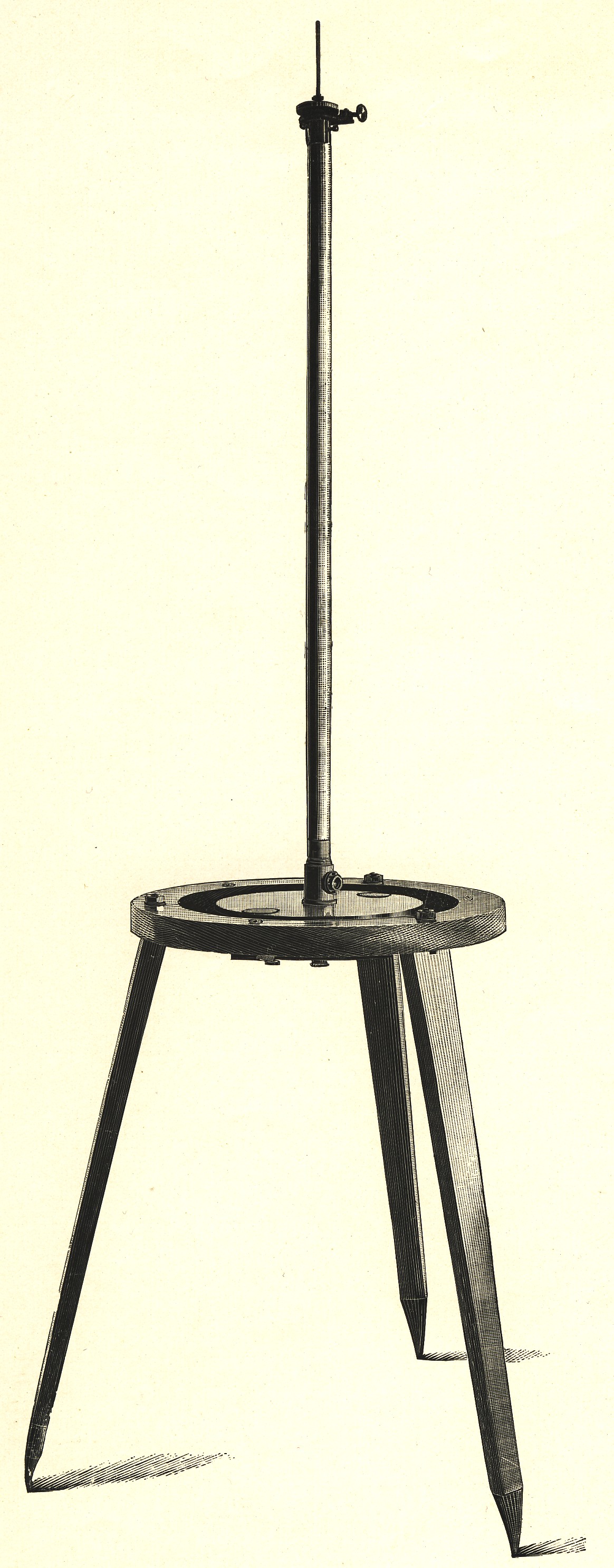
Curvature variometer
Horizontal Variometer (1890)
The first Eötvös torsion balance, sensitive both to the direction and magnitude variations of the gravity field. With this instrument Eötvös carried out his first field measurements, on Ság Hill, Transdanubia, in August 1891.
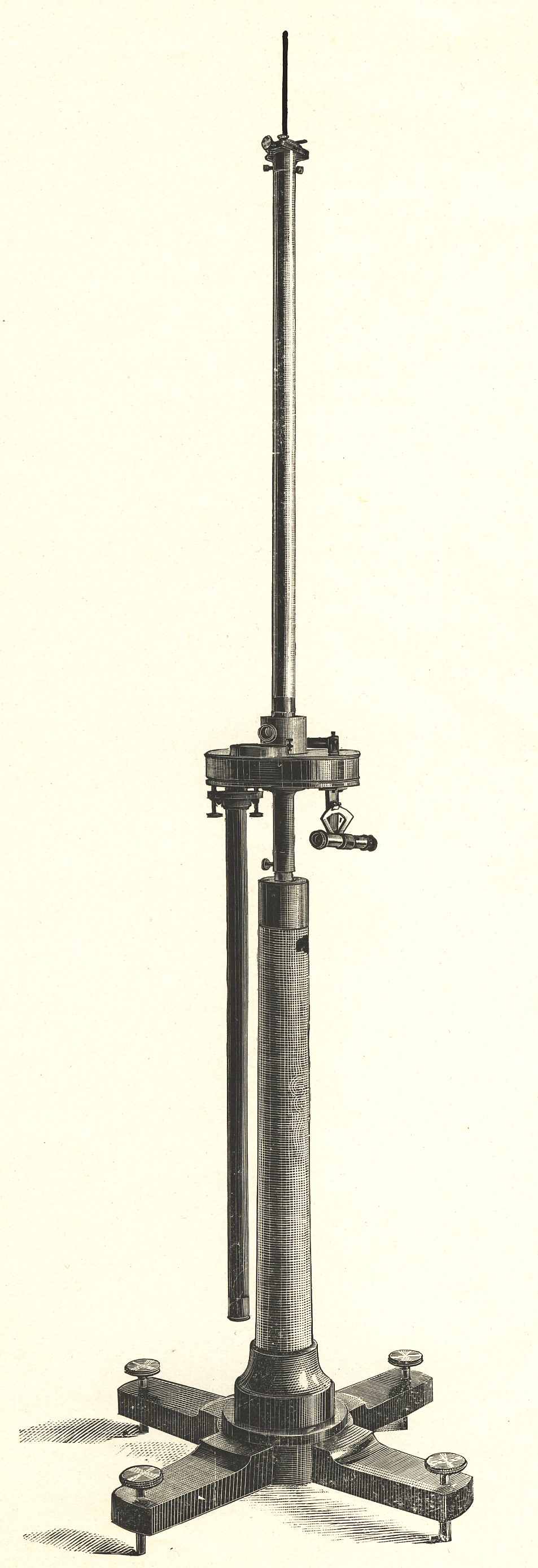
Horizontal Variometer
Single Gravity Variometer (the Balaton Balance, 1898)
An improved version of the horizontal variometer. For easier handling the telescope is built on the frame of the balance. It gained the award of Grand Prix at the Paris world exposition. It was with this instrument that Eötvös carried out his first regional measurements on the frozen Lake Balaton in the winters of 1901 and 1903.
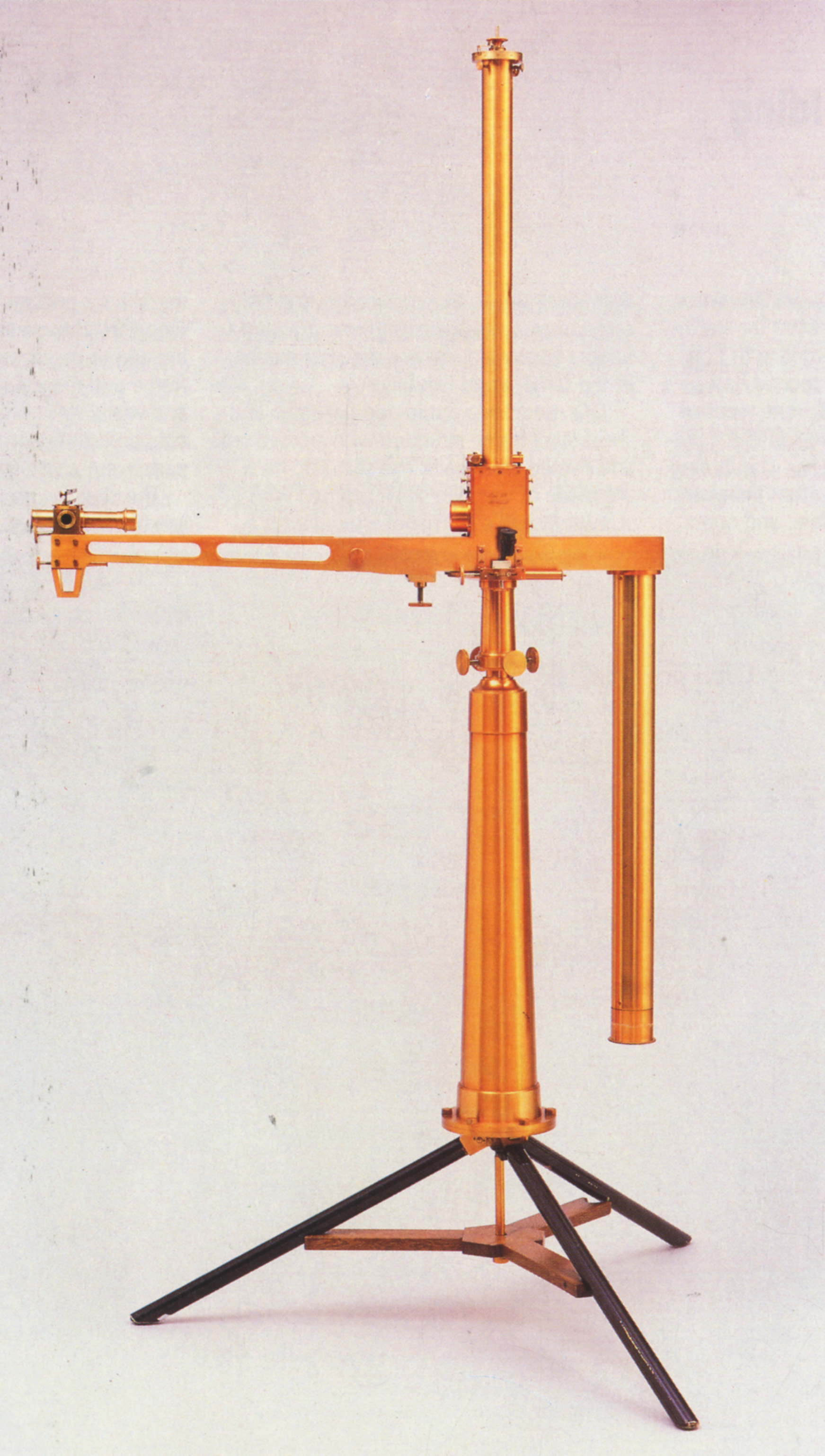
The Balaton balance
Double Balance (1902)
To reduce observation time, two balances are built in antiparallel arrangement into one instrument. Eötvös, Pekár and Fekete used this instrument in their experiments to study the proportionality of inertial and gravitational masses, bringing them the Beneke award. Their results provided a new and high-precision corroboration of Einstein's theory of relativity. It was for this reason that the organizers of the Einstein centenary exhibition in Washington (1979) borrowed this instrument and gave it pride of place.

Double balance
Proportionality of Inertial and Gravitational Mass
Eötvös became concerned with the question of the proportionality of inertial and gravitational mass by the end of the 1880s. In order to examine this phenomenon, he used his sensitive torsion balance. He examined the state of equilibrium of the balance by attaching masses of different composition to each end of the arm of the balance. If the magnitude of gravity depended on the composition of the mass, the state of equilibrium should change in each case. This phenomenon did not occur. In 1908 Eötvös and his colleagues, Jenő Fekete and Dezső Pekár, perfected their measurements to such an extent that they were able to establish that the difference between the inertial and gravitational mass was at most 1/200,000,000. Their paper on the subject won them Göttingen University's Beneke award. The experiments carried out by Eötvös and his colleagues on the proportionality of inertial and gravitational mass provided experimental support for Einstein's theory of relativity.
Eötvös Effect
Problems of gravity observations on the Atlantic, the Indian and the Pacific oceans by O. Hecker for the determination of the Earth’ figure made Eötvös realize that the weight of moving bodies on the Earth's surface depended on their direction and velocity. As the Earth rotates from west to east, the centrifugal force on a moving object is greater if it moves towards the east than towards the west. As a result of this phenomenon the weight of a body moving eastwards will decrease, while that moving westwards will increase. For example the weight of a man walking eastwards is less than if he is walking westwards. The difference would be 2 grams.
The international scientific community recognizes this phenomenon as the Eötvös Effect.
Rotating Balance (1915)
Special device to demonstrate the Eötvös effect. It is basically a balance with a horizontal beam, with a mass attached to each end instead of pans. When the balance is rotated the mass moving towards the west will become heavier, the one moving towards the east lighter. The balance will, therefore, be deflected from its state of equilibrium. If the balance is rotated at such a speed that the rotation period equals the period of its oscillation the impulses occurring during the rotations will cause the balance to make ever greater oscillations.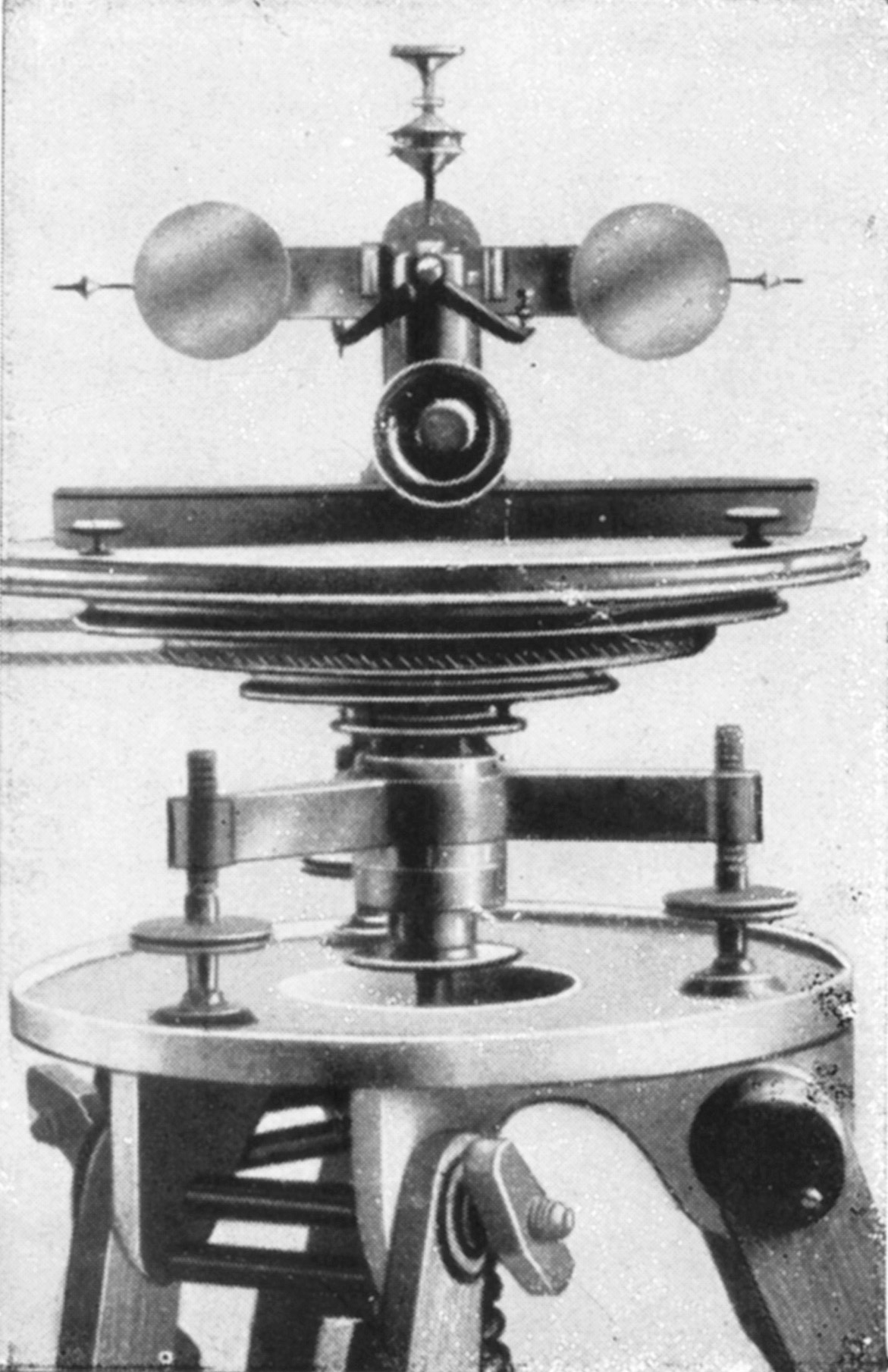
Eötvös’ rotating balance
Eötvös’ Ars Poetica
"The true natural scientist ... finds pleasure in research itself and in those results that help to increase the prosperity of mankind."(L. Eötvös)
